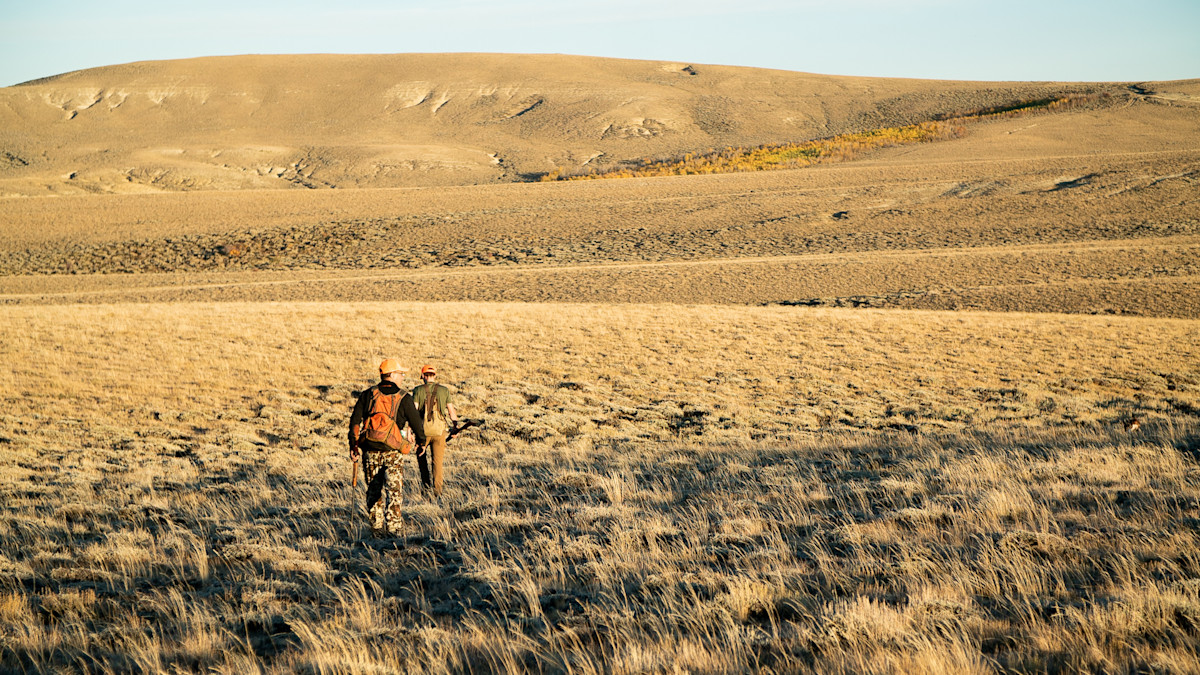New BLM Rule Could Fundamentally Change Public Land Management

UPDATE: On April 18, 2024, the BLM officially finalized the Public Lands Rule. Click here to view the press release. And for more information on the conservation leases involved with this rule, check out Jordan Sillars' previous article here.
The Bureau of Land Management (BLM) has proposed a new rule that could fundamentally change how the agency manages the 245 million acres under its control.
The rule would, among other things, elevate conservation and restoration activity to the same level as other types of land use. It also presents a framework for mitigation work on BLM lands.
The agency cites drought, wildfires, climate change, development, and degraded habitat as justification for the new rule. BLM Director Tracy Stone-Manning said the rule is necessary to protect public land for future generations.
“As pressure on our public lands continues to grow, the proposed Public Lands Rule provides a path for the BLM to better focus on the health of the landscape, ensuring that our decisions leave our public lands as good or better off than we found them,” Stone-Manning said in a statement.
Most people know that the BLM operates under a multiple-use mission, which was laid out by the Federal Land Policy and Management Act of 1976. The BLM manages the acreage under its control to balance resources and allow for recreation (including hunting, fishing, trapping, and shooting), mining, timber harvest, grazing, and other activities. The agency is tasked not only with ensuring these multiple uses can take place now but also that future generations will be able to enjoy them as well.
This new rule would add “conservation” to that list of “uses.”
“To support efforts to protect and restore public lands, the proposed rule clarifies that conservation is a use on par with other uses... The proposed rule does not prioritize conservation above other uses; it puts conservation on an equal footing with other uses,” reads a draft of the rule.
Under the policy, conservation organizations or individuals would be able to lease BLM land much like livestock grazers do right now. However, these new lessees would have the flexibility to conserve or restore the land, rather than be forced to graze livestock, harvest timber, or extract oil, gas, or minerals. If this rule comes to fruition, the BLM will identify rangelands that need restoration work and offer leases of no more than 10 years. These conservation leases could also be purchased by mining or timber companies to offset their impact on the landscape as a condition of permit approval.
Several conservation and sportsmen’s groups voiced support for the rule.
“The Theodore Roosevelt Conservation Partnership supports the restoration and conservation of fish and wildlife habitat on BLM lands as part of the agency’s multiple use and sustained yield mission, and we appreciate the opportunity to engage in this process,” said Joel Webster, VP of western conservation at the TRCP. “BLM public lands and habitat are under increased pressure from drought, severe wildfires, and invasive species, and the Conservation and Landscape Health Rule has the potential to improve the BLM’s ability to address those challenges.”
“This framework will give BLM managers the tools they need to manage for intact and resilient landscapes,” added Land Tawney, President and CEO of Backcountry Hunters and Anglers. “In addition, it prioritizes important active management prescriptions to tackle invasive species and the restoration of lands and waters through conservation leasing–an underutilized tool that will encourage partnerships and collaboration with local communities and NGOs like BHA.”
Those who oppose the rule either say that it fails to go far enough to protect public lands, or it represents an overstep by the Biden administration.
Randi Spivak, public lands policy director at the Center for Biological Diversity, told E&E News that the draft rule is akin to “rearranging deck chairs on the Titanic” and called it “a missed opportunity to address the extinction and climate crises on public lands.”
“The agency’s time would be better spent addressing the root problems of public lands degradation and protecting these treasured places for future generations,” Spivak said. “Instead of addressing destructive mining, fossil fuel extraction, and grazing, this rule basically restates what’s already the law. Major improvements are needed.”
On the other end of the spectrum, North Dakota Senator Kevin Cramer accused the Biden administration of “violating the law and blatantly asserting power it does not have.”
“Congress did not grant additional statutory authority to the Executive Branch, yet it is proposing a totally new standard for BLM public lands,” he said in a statement. “This proposal would hamper the multiple-use mandate ranchers, miners, and energy producers rely on by locking up acres under the guise of conservation.”
The rule is still a long way from being finalized. There will be a 75-day comment period once the draft of the rule is published in the Federal Register, and it likely won’t be completed until next year as the agency reviews feedback from stakeholders.
“We look forward to feedback from the public on how this proposal will help us best uphold the BLM’s important mission,” Stone-Manning said.





